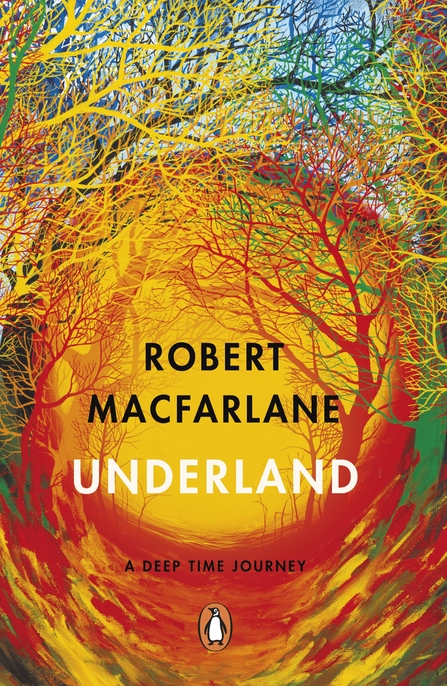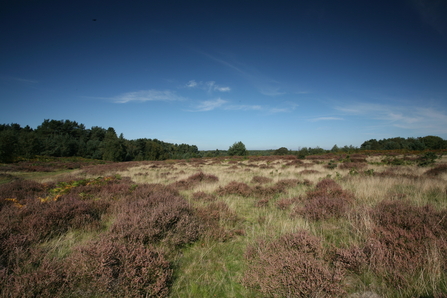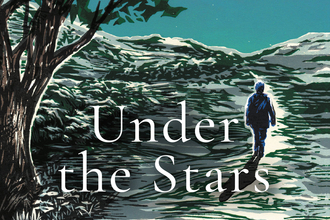
Underland, Robert Macfarlane

In Underland, Robert Macfarlane takes us on a journey into the worlds beneath our feet. From the ice-blue depths of Greenland's glaciers, to the underground networks by which trees communicate, from Bronze Age burial chambers to the rock art of remote Arctic sea-caves, this is a deep-time voyage into the planet's past and future.
Global in its geography, gripping in its voice and haunting in its implications, Underland is a work of huge range and power, and a remarkable new chapter in Macfarlane's long-term exploration of landscape and the human heart.
About the author
Robert Macfarlane is a best-selling author of books on the themes of memory, landscape, nature, environmentalism and travel including, Mountains of the Mind, The Wild Places (Wild Reads 2021), and Landmarks. He is also co-creator of The Lost Words and The Lost Spells with artist Jackie Morris.
Underland is the sequel to The Old Ways: A Journey on Foot and has been described as ‘an epic exploration of the Earth's underworlds as they exist in myth, literature, memory, and the land itself.’
A review by Mary Williams from Hintlesham & Chattisham Bookworms
"As the title suggests, this book deals with what lies beneath our feet. As a keen lover of mountains, with distant views, clear skies, and open expanses, I have an abhorrence of caves with their dark, cold, wet and claustrophobic spaces, more dangerous than anything mountains have to offer. I was, therefore, reluctant to start reading this book. But I had forgotten what an excellent writer MacFarlane is. He managed to make most of his underground explorations very unusual. He is clever with words, mixes poetic imagery with hard scientific facts and manages to make his narrative lively and interesting. His opening paragraph is a masterpiece, and it drew me into his underworld before I had even realized I was reading about caves.
"Late-summer heatwave, heavy air. Bees browsing drowsy over meadow grass. Gold of standing corn, green of fresh hay-rows, black of rooks on stubble fields. Somewhere down on lower ground an unseen fire is burning, its smoke a column. A child drops stones one by one into a metal bucket, ting, ting, ting."
"His own travels to research this book are full of adventure and considerable danger. We are not only in caves, but we investigate tree roots which communicate with each other with the help of fungi, we go into burial grounds in the Mendip Hills, the hidden catacombs of Paris, the ancient ice in Greenland, salt mines in Yorkshire, starless rivers in Italy and more. The blend of personal adventure, nature writing and conveying the horrible messages of our changing planet, written in a lyrical prose make this compelling reading.
"“Underland” is a sequel to three other books: “The Mountains of the Mind”, “The Wild Places”, and “The Old Ways”. Although I am pleased ”Underland” was not longer, I am now looking forward to reading his earlier books. I believe one of them deals with mountains and they all stay above ground!"

Delve into a Wild Read and join us for our virtual book club!
Wild Reads is a partnership project between Suffolk Libraries and Suffolk Wildlife Trust to promote our connection between the natural world and the written word.
Wild Reads aims to give everyone the opportunity to enjoy the very best nature writing. The aim is to help inspire and ignite a love of nature in readers through the lenses of a wide variety of writers.
Visit Suffolk Libraries website here for the full Wild Reads booklist.
Feeling inspired by Underland?
Many of our nature reserves are steeped in history. Knettishall Heath, however, tells a story dating back thousands of years. The open landscape created by our Bronze Age ancestors 4,000 years ago had changed very little until the 20th century when forestry and modern farming transformed large parts of The Brecks. Knettishall Heath still retains a sense of what this ancient landscape must have looked like in the past. The 18th century rabbit warren and the Bronze Age burial mound at Hut Hill are evidence of thousands of years of human occupation, but at the western end of the heath, the ‘patterned ground’ is the product of a much earlier time. At the end of the last ice age, repeated freezing and thawing of the ground created a unique mixing of the sandy soil and the underlying chalk. The unusual vegetation stripes seen here reflect the two soil types and the different plants that grow in each.
Why not take a walk through time and discover Knettishall Heath Nature Reserve.

Knettishall Heath -Steve Aylward



